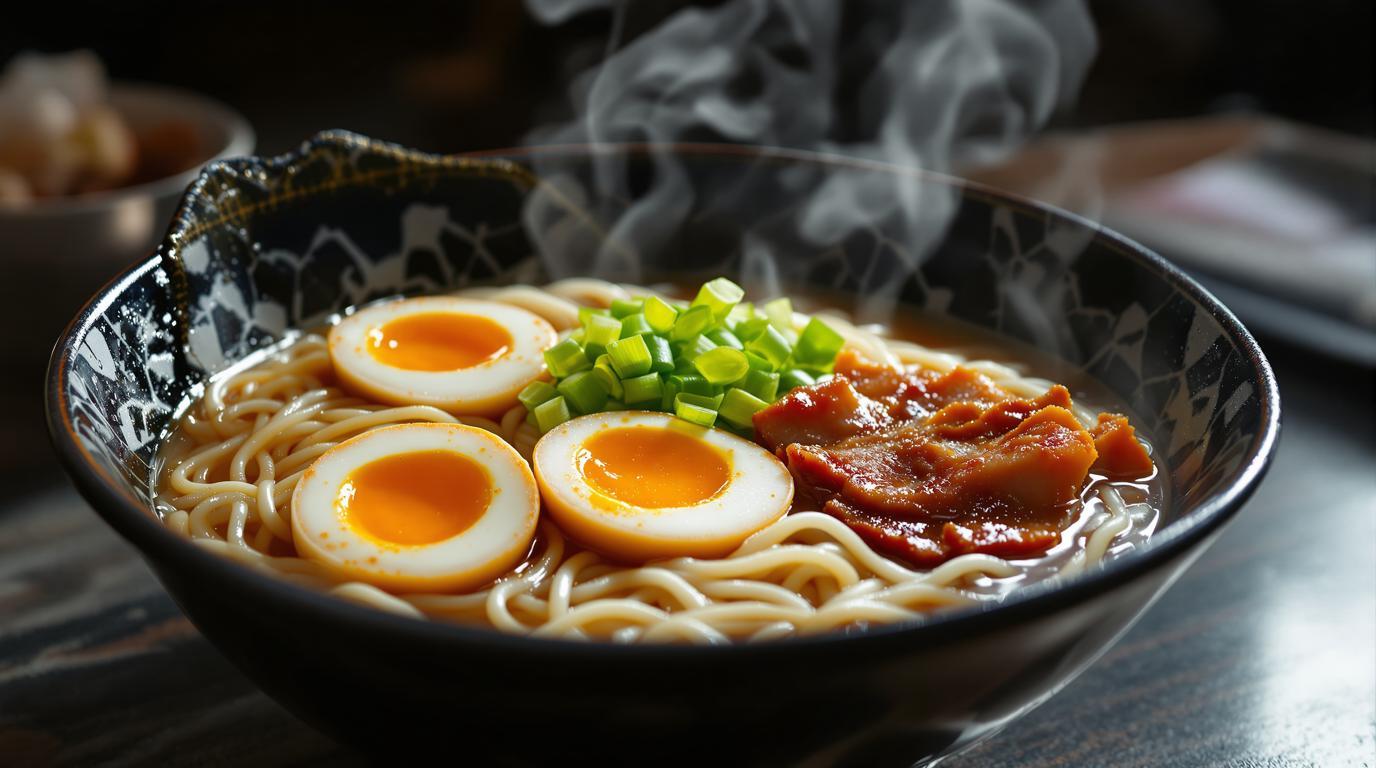There’s something magically soothing about a bowl of cold ramen on a sweltering summer day. When the heat becomes unbearable, I find myself returning to this recipe that my Japanese mentor chef, Hiroshi, taught me during my formative years in Kyoto. What fascinates me about cold ramen is how it transforms from winter comfort food into summer’s most refreshing meal with just a few thoughtful adjustments. The secret? A perfectly balanced dashi broth that’s allowed to develop complex flavors before being chilled to silky perfection.
The Story Behind Cold Ramen Bowls 📖
Cold ramen, or hiyashi ramen, emerged as a practical solution during Japan’s humid summers when appetite diminishes but nourishment remains essential. Unlike its hot counterpart that arrived in Japan in the early 20th century, cold ramen represents the adaptability of Japanese cuisine – preserving tradition while embracing seasonality. In many Japanese households, grandmother’s cold ramen recipe becomes the unsung hero of summer gatherings, with each family guarding their unique tare (seasoning sauce) recipe like precious heirlooms.
During my travels through Tokyo’s Ogikubo district – famous for its ramen innovations – I discovered elderly women serving chilled ramen from street carts, their broths perfected through decades of refinement. These women insisted that proper cold ramen should never be an afterthought but rather a deliberately crafted dish with its own integrity and balance.
Essential Ingredients 🧾
For the dashi broth (makes 4 servings):
- 6 cups (1.4L) filtered water
- 2-inch (5cm) piece fresh ginger, thinly sliced
- 3 garlic cloves, smashed
- 1 bunch scallions (white parts for broth, greens for garnish)
- 4 tbsp (60ml) Japanese soy sauce
- 3 tbsp (45ml) sake
- 1 tsp (5g) sea salt
For the tare (seasoning sauce):
- 2 tbsp (30ml) soy sauce
- 1 tbsp (15ml) mirin
- 1 tbsp (15ml) rice vinegar
For assembly:
- 12-16 oz (340-450g) ramen noodles
- 8 oz (225g) braised pork belly (chashu), thinly sliced
- 4 soft-boiled eggs, marinated in tare
- 2 cups (140g) bean sprouts, blanched and chilled
- 4 scallions, green parts thinly sliced
- 2 tbsp (20g) toasted sesame seeds
- Nori sheets, cut into strips (optional)
Step-by-Step Instructions 📝
- Prepare the broth by combining water, ginger, garlic, scallion whites, soy sauce, sake, and salt in a large pot. Bring to a gentle simmer for 1.5 hours, skimming occasionally.
- Strain the broth through a fine-mesh sieve into a clean bowl. Cool rapidly by placing the bowl in an ice bath, stirring occasionally. Refrigerate until thoroughly chilled, at least 4 hours or overnight.
- Mix all tare ingredients in a small bowl and set aside. Use some of this mixture to marinate peeled soft-boiled eggs for 4-12 hours.
- Cook ramen noodles according to package instructions, reducing cooking time by 30 seconds for a firmer texture. Immediately rinse under cold water to stop cooking and prevent sticking.
- To assemble, divide chilled noodles among four bowls. Arrange sliced pork, halved marinated eggs, bean sprouts, and other toppings artfully atop noodles.
- Pour the chilled broth around (not directly on) the noodles. Drizzle each bowl with 1-2 teaspoons of tare and a few drops of sesame oil.
- Garnish with scallion greens, sesame seeds, and nori strips just before serving.
Chef’s Note: The rapid chilling of both broth and noodles is non-negotiable. Never refrigerate hot broth – it develops off-flavors and becomes cloudy. For restaurant-quality results, chill broth in an ice bath while stirring, then refrigerate.
Chef’s Secret Techniques 🤫
The magic of cold ramen lies in the balance between umami, acid, and texture. I always add a splash of rice vinegar to brighten the chilled broth – a technique my grandmother used when making her famous 5-minute Asian noodles. For protein, traditional chashu pork belly is unbeatable, but chicken thigh sliced thinly works beautifully for a lighter option.
Eggs should be cooked precisely 6.5 minutes for cold ramen – slightly firmer than for hot ramen, as they continue to set in the refrigerator. Marinate them in your tare mixture overnight for a stunning sunset gradient from white to golden yolk.
For texture contrast, I follow the technique I learned creating my Mediterranean tuna bean salad – blanching bean sprouts for exactly 15 seconds before shocking in ice water preserves their crunch while removing the raw, grassy flavor.
Serving & Presentation Tips 🍽️
Cold ramen deserves thoughtful presentation. Serve in shallow, chilled bowls that showcase the careful arrangement of toppings. I arrange ingredients in sections rather than mixing – this creates visual appeal and allows diners to control how flavors combine.
For entertaining, consider a build-your-own ramen bar with pre-chilled broth in a pitcher, cooked noodles, and various toppings. This interactive approach works beautifully alongside frozen yogurt bark or homemade ice pops for dessert.
For a complete meal, pair cold ramen with a protein-packed side like these grandma-inspired overnight oats transformed into a savory version with miso and edamame – unconventional but delightfully complementary.
Remember, cold ramen isn’t just sustenance; it’s summer salvation in a bowl. The careful balance of savory broth, chewy noodles, and fresh toppings creates a symphony of textures that somehow manages to both energize and soothe when temperatures soar. So when the next heatwave strikes, skip the takeout and treat yourself to this authentic taste of Japanese summer that honors tradition while perfectly addressing modern needs.
